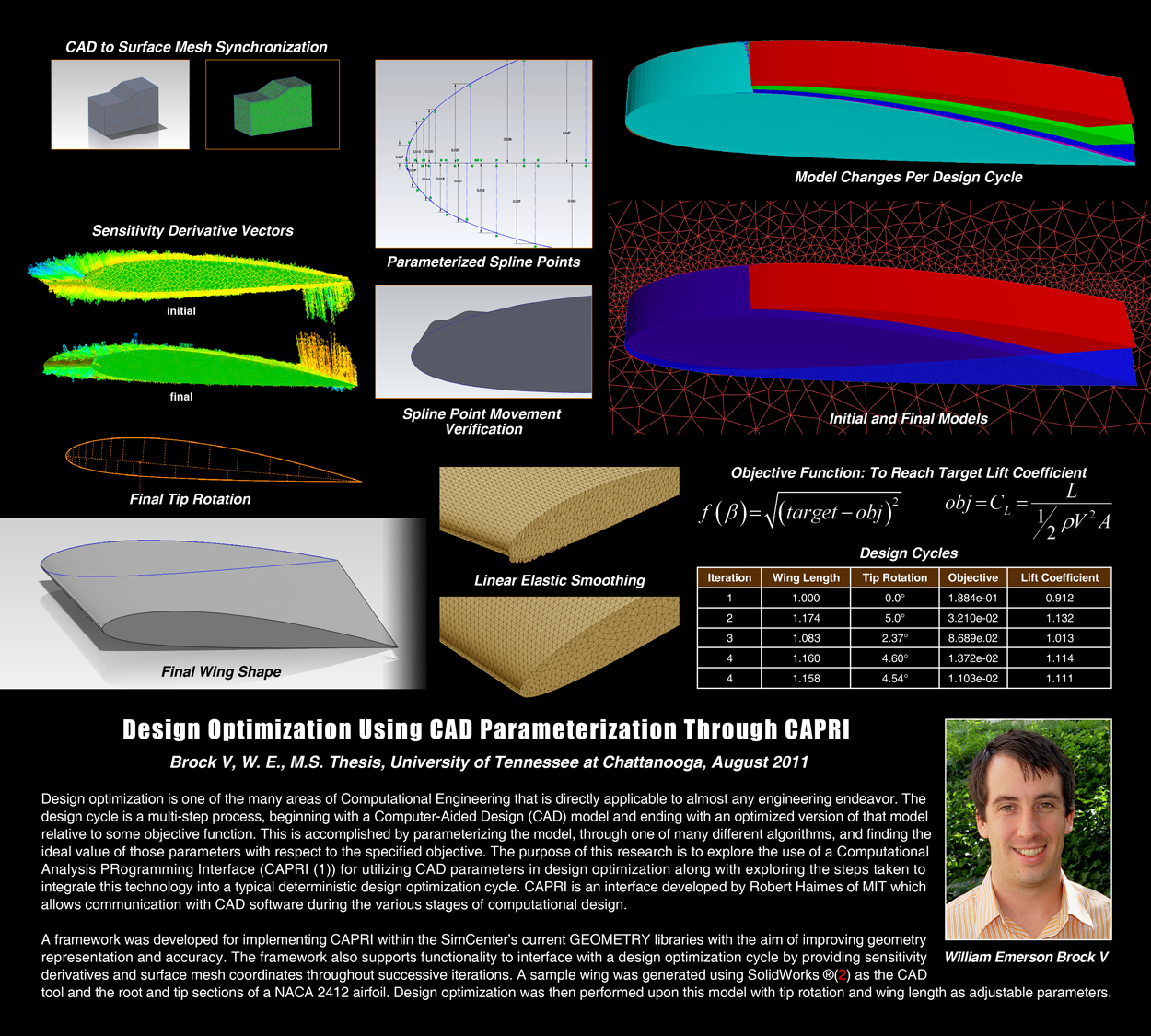Bill Brock
Design Optimization Using CAD Parameterization Through CAPRI
A Thesis Presented for the Master of Science in Computational Engineering Degree, The University of Tennessee at Chattanooga
William Emerson Brock V, August 2011
Abstract:
Design optimization is one of the many areas of Computational Engineering that is directly applicable to almost any engineering endeavor. The design cycle is a multi-step process, beginning with a Computer-Aided Design (CAD) model and ending with an optimized version of that model relative to some objective function. This is accomplished by parameterizing the model, through one of many different algorithms, and finding the ideal value of those parameters with respect to the specified objective. The purpose of this research is to explore the use of a Computational Analysis PRogramming Interface (CAPRI (1)) for utilizing CAD parameters in design optimization along with exploring the steps taken to integrate this technology into a typical deterministic design optimization cycle. CAPRI is an interface developed by Robert Haimes of MIT which allows communication with CAD software during the various stages of computational design.
A framework was developed for implementing CAPRI within the SimCenter’s current GEOMETRY libraries with the aim of improving geometry representation and accuracy. The framework also supports functionality to interface with a design optimization cycle by providing sensitivity derivatives and surface mesh coordinates throughout successive iterations. A sample wing was generated using SolidWorks® (2) as the CAD tool and the root and tip sections of a NACA 2412 airfoil. Design optimization was then performed upon this model with tip rotation and wing length as adjustable parameters.
Click here to access a full copy of Bill's thesis.
